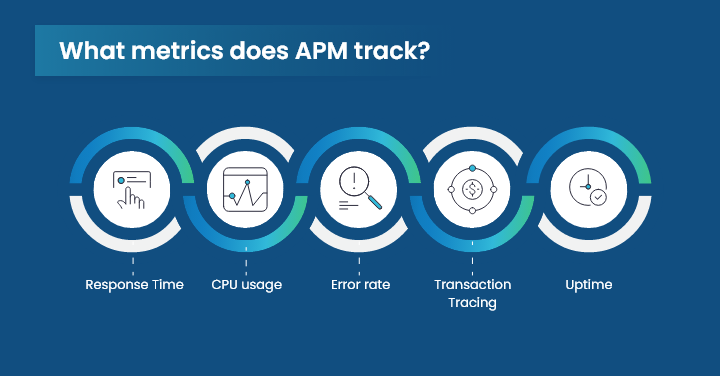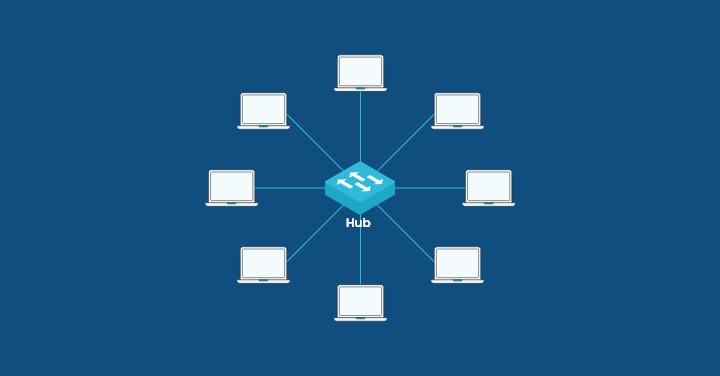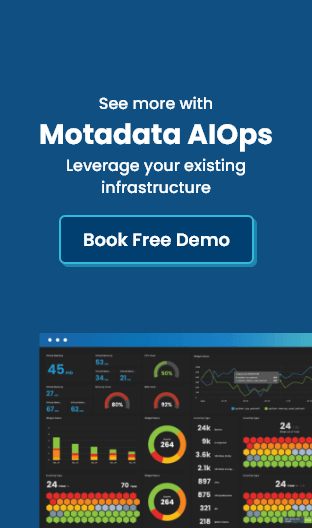In today’s digital world, applications play a vital role in business operations. Whether it’s an internal tool used by employees or a customer-facing application, the performance of these applications directly impacts user experience, business outcomes, and overall productivity.
Application Performance Monitoring (APM) is a critical practice that ensures applications meet the performance, reliability, and user experience standards required by employees, partners, and customers.
APM involves the collection of tools and processes designed to monitor and manage the performance of enterprise applications. It allows IT professionals to track various metrics, identify performance issues, and quickly resolve them to optimize application performance.
By monitoring key performance indicators such as response time, CPU usage, and error rates, APM tools provide valuable insights into application health and help organizations proactively address any performance issues.
With the increasing complexity of modern applications, APM has become essential for maintaining a seamless user experience. Today’s applications are often distributed across multiple servers, utilize various dependencies, and interact with different components.
APM provides visibility into the entire application stack, allowing IT teams to identify bottlenecks, troubleshoot issues, and optimize performance at every level.
In this blog, we will explore the definition of APM, its importance, how it works, its benefits and challenges, and the different types of APM tools available in the market.
We will also discuss the top APM tools and vendors and how AWS can help with application performance monitoring.
By the end of this blog, you will have a comprehensive understanding of APM and its significance in ensuring optimal application performance.
Why Application Performance Monitoring is important?
Application Performance Monitoring (APM) is important for several reasons. First and foremost, it ensures a positive user experience by monitoring and optimizing application performance.
In today’s digital landscape, users have high expectations when it comes to the performance of applications.
They expect applications to be fast, responsive, and reliable. If an application is slow or experiences frequent performance issues, users may become frustrated, leading to dissatisfaction and potentially impacting business outcomes.
APM is also important for business outcomes. Poor application performance can directly impact revenue, customer satisfaction, and brand reputation.
When applications are slow or inaccessible, users may abandon transactions, leading to lost sales and revenue. Additionally, negative user experiences can damage a company’s reputation and lead to decreased customer loyalty.
By monitoring and optimizing application performance, organizations can ensure that their applications meet the performance standards necessary for achieving business success.
How does APM work?
Application Performance Monitoring (APM) works by continuously monitoring and analyzing the performance of software applications.
It involves the collection of performance data from various sources, such as servers, databases, and network devices, and the analysis of this data to identify performance bottlenecks and potential issues.
APM tools collect performance data from different components of an application, including server metrics, database queries, network latency, and user interactions.
This data is then aggregated, analyzed, and visualized to provide insights into the overall performance of the application.
By monitoring key performance indicators, such as response time, error rates, and CPU utilization, APM tools enable IT teams to identify performance issues and take appropriate actions to resolve them.
Effective APM involves a combination of automated monitoring, real-time alerting, and proactive performance optimization.
APM tools continuously monitor performance metrics and generate alerts when performance thresholds are exceeded or anomalies are detected.
These alerts help IT teams quickly identify and respond to performance issues, minimizing the impact on end users.
To ensure effective APM, organizations need to define relevant performance metrics, set performance thresholds, and establish performance baselines.
By monitoring these metrics and comparing them against the predefined thresholds and baselines, organizations can proactively identify potential performance issues and take preventive actions.
Overall, APM works by monitoring and analyzing performance data to identify performance bottlenecks, optimize application performance, and ensure a smooth user experience.
By implementing effective APM practices, organizations can deliver high-quality applications that meet user expectations and support their business goals.
What does APM do?
System administrators and developers can diagnose, monitor, and optimize the overall performance of their applications using this robust APM tool.
It uses machine learning and artificial intelligence techniques to monitor and analyze how users interact with applications as well as discover bugs and other problems that may impact user-end experience.
It further provides actionable insights into the application health, component status, response time, resource usage, error rate, and other aspects that play a key role in application performance.
With this useful solution, developers can even keep a real-time watch over the frontend as well as backend components of applications.
Here are a few more key features of Application Performance Monitoring tools:
- Visualize application topology – The tool provides a 360-degree view of the application and its architecture that helps in better understanding of the workflow anomalies and external dependencies.
- AI-powered Troubleshooting – It helps quickly identify unusual user behavior with AI techniques and machine learning, enabling developers to take corrective measures before they affect end-user experience. It even helps keep track of user interactions with the application and meets the unique needs for better business outcomes.
- Distributed Tracing – With this powerful solution, developers can even keep a good track of all transactions that take place across both microservices and distributed architecture.
Why do we need APM?
Organizations need Application Performance Monitoring (APM) for several reasons. Here are some key reasons why APM is essential:
Proactively identify and resolve performance problems: APM enables IT teams to proactively monitor application performance and identify performance issues before they impact end users. By monitoring key performance indicators and collecting data on application performance, organizations can quickly identify the root causes of performance problems and take appropriate actions to resolve them.
Optimize application performance: APM provides insights into the performance of individual components and the overall application architecture. By analyzing performance data and identifying bottlenecks, organizations can optimize application performance, improve user experience, and ensure the reliability and availability of their applications.
Improve IT operations: APM helps IT teams streamline operations and enhance productivity. By monitoring application performance, IT teams can identify areas for improvement, prioritize tasks, and allocate resources effectively. APM also allows IT teams to proactively identify and resolve performance issues, minimizing the impact on end users and maximizing the efficiency of IT operations.
Drive business outcomes: Application performance has a direct impact on business outcomes. Poor application performance can result in lost revenue, decreased customer satisfaction, and damage to brand reputation. By ensuring optimal application performance, organizations can drive positive business outcomes, enhance customer satisfaction, and maintain a competitive edge in the market.
Five Elements of APM:
1. End-user experience monitoring: As per a Gartner survey, end-user experience monitoring is the most critical element of the APM. It collects information on how end-users interact with the application, identifying any problems.
2. Runtime Application Architecture Discovery: This element of APM understands the application’s architecture and how different components interact during the runtime. With this, it becomes easy to identify dependencies and possible performance bottlenecks.
3. User-Defined Transaction Profiling: User-defined transactions traverse the architecture, which is why they are more important than we think. Transaction profiling refers to tracking individual user transactions or requests to understand when and where the events occur.
4. Component Deep-Dive Monitoring: This element involves monitoring and analysing specific application components, such as databases, servers, or third-party integrations. It offers insights into the performance of each segment, allowing for targeted optimizations.
5. Analytics: Simply having information is not enough; you need to make sense out of it – this is when analytics plays a role. It collects and analyses performance data, providing valuable trends, patterns, and correlations that aid in making informed decisions for application optimization.
What metrics does application performance monitoring track?
Here are some of the common metrics that a business can monitor using Application Performance Monitoring, including:
Response Time – Response time is one of the key metrics in a business for it updates how much time it took for a user to respond to the customer’s request. High response time implies that the user responded to the request without any delay, resulting in satisfied customers. These are generally measured by setting a predetermined threshold limit. If the count falls below the set limit, the solution will send an alert to the team and compare performance to an acceptable baseline.
CPU usage – Another key metric is CPU usage which can be tracked using this powerful software. Be it CPU utilization score or memory usage, the application performance monitoring solution tracks it all and notifies if the program is receiving the processing power it needs to function properly.
Error rate – With APM, users can run a complete thorough analysis of the modern applications and report error rates. For example, database query failure or inquiry times out. As the error rate goes beyond the set parameter, an alert will be automatically sent to the team updating about the potential future issues.
Transaction tracing – It provides a precise image of each individual transaction made within an application, i.e., any external call, database call, etc., to keep an update of all the transactions.
Uptime – This metric is highly crucial for any business that offers online service. Most service level agreements (SLAs), only permit a certain percentage of downtime during predefined intervals. However, with this monitoring tool, you can keep track of application availability and compare it with customer-specified levels.
Key Components of Application Performance Monitoring
APM consists of the following components:
1. Application Detection and Mapping
APM tools include features for automatically identifying and mapping the interconnected components of an application environment. This helps IT teams gain insight into the relationships between different application components, such as servers, databases, and third-party services.
2. Metrics Monitoring
APM involves the collection and monitoring of various performance metrics, which can include response time, CPU utilization, memory usage, network latency, and error rates. By tracking these metrics, IT teams can identify trends and any performance issues.
3. Transaction Tracing
APM solutions often offer transaction tracing, which allows IT teams to trace the execution path of individual transactions or requests. Transaction tracing provides insights into the performance of specific application components and helps pinpoint the root cause of certain performance issues.
4. Alerting and Notifications
To proactively identify and address performance issues, APM tools typically include alerting and notification features. IT teams can set up alerts based on predefined thresholds or anomalies detected in performance metrics. These alerts enable rapid response to performance issues before they impact end users.
5. Analytics and Reporting
APM solutions often offer advanced analytics and reporting capabilities to help IT teams gain deeper insights into application performance trends and patterns. By analyzing historical data, organizations can identify areas that require more refinement and make data-driven decisions to improve application performance.
How is APM different from observability?
APM and observability are two related concepts in the field of performance monitoring, but they have distinct differences. While both APM and observability focus on monitoring the performance of software applications, they differ in terms of their scope and approach.
APM primarily focuses on monitoring and managing the performance of applications. It involves the collection of performance data from various sources, such as servers, databases, and network devices, to identify performance bottlenecks and potential issues.
APM provides actionable insights and recommendations for optimizing application performance and enhancing user experience.
On the other hand, observability is a broader concept that encompasses not only performance monitoring but also the ability to understand and debug complex systems.
Observability focuses on the ability to gain insights into the internal workings of a system based on observed data. It involves collecting and analyzing various types of data, such as logs, metrics, and traces, to gain a comprehensive understanding of system behavior.
While APM provides specific insights into application performance, observability provides a more holistic view of system behavior. Observability enables organizations to understand how different components of a system interact and identify potential issues that may impact performance.
In summary, APM and observability are related concepts in performance monitoring, but they differ in terms of their scope and approach. APM focuses specifically on application performance monitoring, while observability provides a broader view of system behavior and performance.
Benefits of Application Performance Monitoring
Alongside providing real-time insights, application performance monitoring (APM) offers unique benefits such as:
1. Improved User Experience
Monitoring application performance ensures a smooth and responsive user experience. Organizations can minimize downtime and prevent frustration by identifying and resolving performance issues before they impact end users.
2. Operational Efficiency
APM solutions help streamline IT operations by providing visibility into application performance and automating the detection and resolution of performance issues, reducing the time and resources spent on troubleshooting.
3. Enhanced Business Agility
Organizations can adapt to changing business requirements and scale their applications to meet growing demand. Identifying performance issues and optimizing application performance ensures that applications can support business growth.
4. Reduced Costs
APM solutions help save money by minimizing lost revenue due to poor performance or outages. Organizations can avoid costly emergency fixes and reduce the need for additional infrastructure resources.
5. Data-Driven Decision Making
By analyzing valuable insights into application performance trends, organizations can make informed decisions about resource allocation and application optimization strategies.
Common Use Cases for Application Performance Monitoring
Application Performance Monitoring (APM) can be implemented across different IT domains to ensure optimal performance and user experience. Some of the common areas where APM can be applied include:
1. Web Application Monitoring
By tracking metrics such as page load times, server response times, and transaction throughput, organizations can ensure that their web applications deliver a fast and responsive user experience.
2. Mobile Application Monitoring
APM solutions help organizations monitor metrics such as app launch times, network latency, and API performance to ensure optimal performance across various mobile platforms and devices.
3. Cloud Application Monitoring
APM solutions provide visibility into the performance of cloud-based resources, such as virtual machines, containers, and cloud services, to help organizations optimize performance and ensure reliability in the cloud.
4. Microservices Monitoring
APM solutions offer transaction tracing capabilities that enable organizations to track the execution path of microservices-based applications and identify performance bottlenecks at the service level.
5. Enterprise Application Monitoring
APM solutions are also used to monitor the performance of enterprise applications, such as ERP systems, CRM platforms, and business intelligence tools.
By monitoring key performance metrics and user interactions, organizations can ensure that these mission-critical applications meet performance SLAs and support business operations effectively.
Advantages of an advanced APM platform
Advanced APM platforms provide several advantages in comparison to the traditional monitoring methods, such as:
1. Advanced cloud observability
AWS, Azure, and GCP are some of the popular cloud platforms used by a large group of businesses. Basically, these applications, which run in containerized environments distributed across different cloud services, are made up of millions of lines of code and feature With the help of APM solutions, businesses can smoothly work on these platforms and gain detailed insights into the operations in the cloud environment.
The best part about these platforms is they do not require any configuration or training as they manage everything on their own and provide complete observability.
Right from tracking down the application performance to keeping a check on component status, everything is possible with the advanced APM platforms.
2. Continuous automation
With continuous automation capabilities, chances of human error will be reduced and all operations will be performed at a faster pace. Be it automated discovery of components, identification of unusual patterns, or triggering predefined actions, all tasks will be completed quickly and too without the need for manual intervention.
Organizations must constantly automate operations to ensure proper application performance because humans are incapable of maintaining, configuring, scripting, and sourcing data in a cloud-native environment.
Automated processes will save time and human effort, resulting in an overall improvement in performance and customer satisfaction.
3. AI Assistance
The Application Performance Monitoring platforms use AI techniques and algorithms to run proper analysis on the information gathered from different applications.
With the help of AI assistance, users are able to find the root cause of the issue and detect anomalies at an initial stage, enabling quick solutions to the issue before it affects business operations. Further, AI methods aid teams in prioritizing and filtering alerts based on their impact.
4. Cross-team collaboration
By providing a centralized center where various teams within an organization may collaborate more successfully, advanced APM technologies enable cross-team communication.
These platforms facilitate information sharing, collaborative problem-solving, and goal alignment among teams, regardless of their departments. Your team members might belong to the operational department or development department, however, with the APM, teams gain a unified view of the overall app performance and related KPIs, resulting in quick solutions and effective decision-making.
Conclusion
There’s a good probability the end user will move to another application if it loads slowly or continuously displays faults on the screen. An application failure can thereby destroy the goodwill of your company.
Therefore, it’s best to spend time and money on top application performance management tools in order to track, manage, assess the performance of your application and deliver better end user experience.
Businesses can maintain system functionality and catastrophe recovery with these potent tools. Your company will be better equipped to identify and track the errors and defects that are interfering with IT operations and negatively affecting your performance with the right insights and reports.
You can further prevent issues more quickly by using APM tools like Motadata and deliver seamless customer experience.
If you want to avoid users having a negative application experience or calling your help desk frequently, it is best to troubleshoot issues using these tools. Its exclusive features help improve performance and optimize code efficiency.
FAQs
With APM, developers can gain full visibility into the different components of applications that help identify problems and errors in the application resulting in downtime.
By identifying the faults at an initial stage and troubleshooting issues, organizations can reduce errors and downtime that impacts directly the user experience.
As a result, the user faces fewer issues operating a software application, i.e., a higher satisfaction level and more revenue returns to the company.
APM uses machine learning and Artificial intelligence methods to trace transactional processes, monitor performance metrics, and detect anomalies.
It collects data from different sources, monitors unusual patterns, and discovers errors in real time.
Also, it plays a crucial role in preventing downtime by finding out and resolving issues that may turn into bigger problems in the future if left unnoticed and impact the application’s performance.
With all these actions, APM helps optimize the performance and improve user experience.
Performance issue diagnosis and resolution are made easier by integrating APM with DevOps methods.
Teams can identify and fix errors and bottlenecks during development by obtaining real-time application performance statistics by integrating effective APM tools into the CI/CD process.
Performance monitoring and enhancement of the application are encouraged by this integration.
APM in DevOps provides:
- Real-time insights into application performance.
- Facilitating rapid issue detection.
- Faster troubleshooting.
- Collaboration between development and operations teams for continuous improvement.









